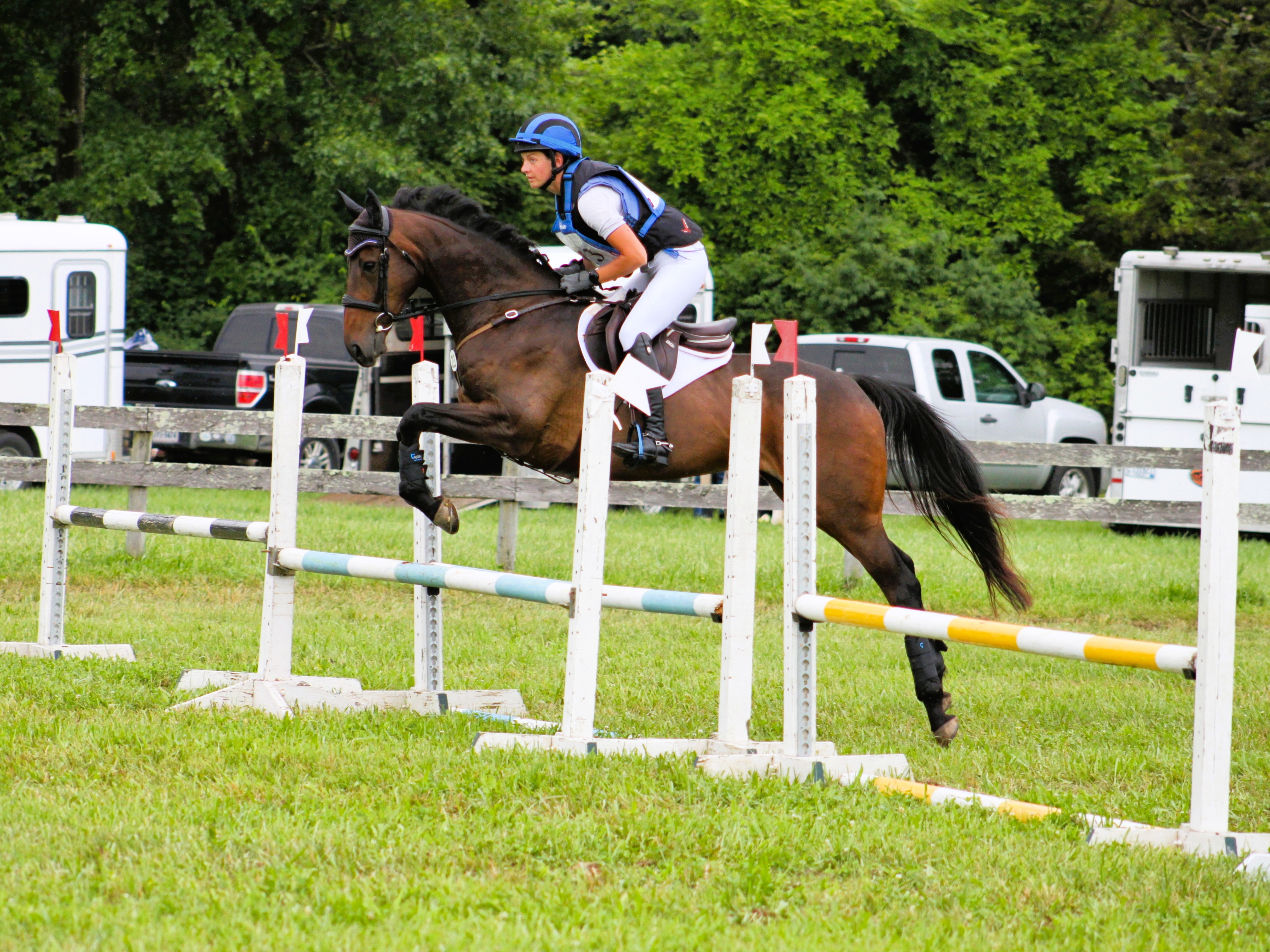We’re pleased to introduce a new training series from our friends at Ride iQ! Be sure to check out the Ride iQ app for coaching in your ear, progressive series, podcasts, and much more here.

Picture this. For weeks, you’ve been preparing for the show, and even though you’ve spent ample amounts of time training, you still have some questionable thoughts running through your mind. Maybe they sound something like this:
“What if my horse spooks?”
“What if we stop at a jump?”
“What if I forget my course?”
“I don’t think I’m ready for this.”
If there’s anything we know about equestrian sports, it’s that fear, anxiety, and stress are quite common among most riders. Why is that? Put simply, individuals today are met with high demands both in and out of the saddle.
Described by transformative life coach Natalie Hummell as living outside your window of capacity, individuals are faced with recurring negative thoughts and emotions that take up real estate in your mind, making it difficult to focus and be in the present moment.

Photo by Leslie Wylie.
Natalie works with a range of clients from all riding levels in conquering fear, doubt, and overwhelm. She explains how anxiety and stress accumulated throughout your day can leave you feeling anything but calm, focused, and present when you arrive at the barn. This is where learning more about your nervous system is key.
Learning Your Nervous System
Your nervous system is designed to protect you from danger. When your mind perceives a threat, it enters into one of the following: flight, fight, or freeze.
An overactive mind is a side effect of living outside of your capacity, and you can become stuck here, constantly reacting from a state of fear. Sound familiar?
Here are some signs you are living with an overactive mind or outside your capacity:
- Difficulty concentrating
- Racing thoughts
- Feeling overwhelmed
- Irritability or mood swings
- Sleep disturbances
When your nervous system is in hyperarousal, it makes it harder to stay on task and maintain usual levels of productivity. When you arrive at the barn in a state of hyperarousal and then add the stress of wanting to perform, you move out of your window of capacity and out of the present moment. In order to correct this, we must work to stretch the window of capacity by addressing the mind and body to minimize an overactive mind.
Creating Safety in the Body
When you’re faced with a trigger, your body will create a physiological response while your brain goes into problem solving mode in an effort to keep you safe. In order to stretch your window of capacity, you must create safety in the body by embracing your thoughts and emotions rather than resisting them. You should aim to feel your emotions without becoming them on a somatic level ( the level of your body). When you feel safe and regulated in your body, your mind automatically quiets down, and you’re able to focus better on the task at hand.
The next time you feel stressed, overwhelmed, fearful, or anxious, try Natalie’s somatic exercise to embrace the sensations, calm your mind, and create focus.
Watch the Ride iQ episode with Natalie Hummel on YouTube here.
Nervous System Reset – Somatic Exercise with Natalie Hummell
An important thing to remember through this exercise is that the nervous system heals through feeling versus thinking. Do the exercise as much as possible to build your window of capacity. You can also try completing this exercise during any transitions or tasks in your day, such as leaving the house for work or before beginning a training session.
If you complete this multiple times a day, you’ll start to notice that the things that once caused you stress, you now do with presence and focus.
Duration: 10 minutes
Tip: Find a quiet place with no distractions where you can sit or stand comfortably.
Take a look around your environment and find a glimmer: something neutral or pleasant that you can take a few grounding breaths with.
On your next exhale, close your eyes and allow yourself to tune in to the thoughts going through your mind.
Start to speak all the thoughts out loud without any judgment or analysis.
These can sound like “I’m so overwhelmed” or “I’m so tired.”
After you’ve spoken your thoughts out loud, take a moment to identify the emotions that are here.
Are you feeling anxious, excited, frustrated, or something entirely different?
Acknowledge these emotions without trying to change or suppress them.
Now try to notice where this emotion lives in your body.
Do you feel tightness in your chest? Butterflies in your stomach? Or tension in your shoulders?
Take a deep breath in, and as you exhale, imagine releasing the sensations. Continue breathing deeply and deliberately.
Focus on releasing any tension or discomfort in your body.
With every exhale, just let go. Bring your shoulders down and back.
Allow all sensations to be here.
Think of being the ocean floor, and any sensation, emotion, or thought is just a wave.
Don’t argue with it, but allow it. With every breath, just allow.
Now take a moment and notice how your body and mind feel.
You may notice you feel more relaxed, focused, and prepared to tackle the challenges ahead.
Note: If this was challenging for you, that is perfectly okay. Don’t let your mind create any meaning around it.
Want to learn more about healing your nervous system? Access Natalie’s entire Sports Psychology series by joining Ride iQ. Start your 2-week free trial at Ride-iQ.com. You can also check out some interviews with Natalie here.



















